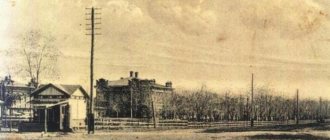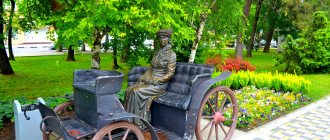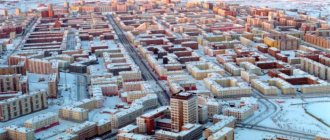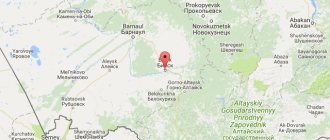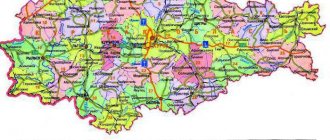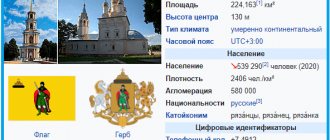Magadan is the capital of the Magadan region, the northernmost on the map of the Russian Federation. A young city built during the years of Soviet power, this year on July 14 it turned 80 years old. Before answering the question of where Magadan is located, you need to get acquainted with its history, which is truly complicated.
Population
Magadan's population has declined significantly since Soviet times. According to the first official data available to researchers, in 1939 there were 27,313 people living in the city.
After this, for many years the dynamics were extremely positive. Already in 1956, the population of the city of Magadan exceeded 50 thousand people. In 1973, 101 thousand inhabitants were already recorded. In 1989, the population of Magadan exceeded 150,000. The record was currently set in 1991. At that time, 155 thousand people officially lived in this city.
Total migration puts Magadan on the brink of extinction
Magadan Mayor Yuri Grishan said that the city will not be able to serve itself if its population falls below 85 thousand people
Now only 91 thousand people live in Magadan, which is critically close to the extinction line. The region is also rapidly emptying: from 550 thousand people in the 80s, its population has dropped to 139 thousand, and the areas are filled with ghost villages. Experts believe that the main reason for the demographic crisis is the standard of living.
The mayor of Magadan, Yuri Grishan, said on radio Kolyma that the city should ideally have a population of 120 thousand people. At the same time, there is a figure at which the capital of Kolyma will not be able to serve itself - 85 thousand. The words of the city mayor are quoted by the regional publication “Vesma”.
“We won’t be able to teach, we won’t be able to heal, we won’t be able to clean and feed ourselves. Just like in an enterprise, in order for a city to exist, you need a very clear definition of the number of people, how many are employed in each area. And when we count all this, 120 thousand people should live in the city.” – Yuri Grishan mayor of Magadan.
“We count all the infrastructure facilities that we have under this figure. We are building a maternity hospital for the future, sewage treatment plants are built for the future, we are doing all reconstruction and power supply lines for the future. Our task is not just to artificially retain people, we must give them a good salary,” the mayor concluded.
According to Grishan, now a team of seven people with the participation of architects, the mayor and the first deputy chairman of the regional government is working on a development strategy for Magadan until 2030. The program will be defended at the VEB commission (Russian state development corporation).
However, the general trend towards migration from the Magadan region obviously plays against the plans of the local authorities.
Experts interviewed by Octagon.Vostok believe that the outflow of population in Magadan and the region is primarily due to the fact that the advantages of staying here (“the long ruble” of Soviet times) have disappeared, and the disadvantages (harsh climate, lack of developed infrastructure, problems with medicine and education) have been preserved.
– Salaries that seem high by the standards of other regions (40–50 thousand per month even for unskilled professions. - τ.) are offset by the cost of food and housing and communal services. That is, while receiving for their salary the same amount of benefits as residents of the central regions of the country, residents of the Magadan region live in much more severe climatic conditions, deprived of the infrastructural advantages of residents of the European part of Russia, says political scientist Olga Barkhatova.
The advantages of living and the “long ruble” in Magadan remain in the Soviet past. Photo: Andrey Khabarov/Wikipedia/CC BY 3.0
The outflow of the population is also influenced by the availability of the Internet, the expert says.
“With more accessible Internet, more and more citizens are aware of the current situation in the Magadan region and are drawing conclusions that staying here longer is impractical and even harmful to personal well-being,” Barkhatova believes.
Problems not only in the city, but throughout the entire region, whose population has decreased almost fourfold over the past 40 years. The tense socio-economic situation is caused by the closure of city-forming enterprises in many Kolyma villages in the 90s. Following them, populated areas are rapidly emptying out. According to the Kolyma.ru publication, regional authorities added 11 villages to the list of closures. Since 2005, five settlements have been almost completely resettled; certificates have been provided to 789 families consisting of 1,665 citizens.
“Not much money is allocated for the resettlement program, and settlements remain in resettlement status for a long time - from 5 to 10 years,” Andrey Grishin, editor-in-chief of the Magadan publication “Vesma”, shares his opinion with Octagon.Vostok.
According to him, there are simply no shops in the villages, so local residents are forced to travel to large settlements for groceries.
– People are waiting until they are offered to move somewhere: to another village or under a program of moving from the regions of the North to the central part of Russia. About 20 thousand people are in the program, while certificates for the purchase of housing are issued to 50–70 families per year. Something needs to be done with these people, it would be just humane,” says Grishin.
The population of Magadan is not only decreasing, but also aging.
– In the region, more than 46 thousand people have the status of age pensioners. Many of them continue to work, but you need to understand that this group of people is in the first echelon of those leaving. They retire, sell real estate and move to the central region. But not very many people come here: for seasonal work - rotation workers, for six months to a year - migrants. For those who do not have a profile related to the mining industry, moving here does not make any sense, says the journalist.
Every second Magadan resident, according to experts, suffers from “delayed life syndrome,” planning to stay here for no more than a dozen years. And then escape to the mainland. This is what Kolyma residents call the rest of Russia outside of Magadan.
– In order for people to stay in the region, it is necessary not only to increase salaries, but also to provide them with developed infrastructure. And this includes the construction of a new maternity hospital, equipping hospitals with modern medical equipment and highly qualified specialists, and improving urban space and landscaping. However, even if people are provided with everything they need, including high salaries, some Kolyma residents will still leave the region due to the harsh climate. And, unfortunately, no one can fix this,” comments expert Olga Barkhatova.
There are large and ambitious projects in the region: for example, “Sunny Magadan”, which involves the construction of a ski slope. The project is partially sponsored by local businesses, but its implementation was limited by the issue of purchasing a good lift and track equipment. This requires about 2.5 billion rubles - an unaffordable amount for entrepreneurs. At the same time, the ski slope in Kolyma would be especially relevant: due to special weather conditions, the season could open in September and close in May.
Also, the situation could be somewhat improved by the appearance of a railway connection - this would reduce the cost of products and simplify all processes associated with construction. But so far there are no such plans. Magadan residents also complain about high taxes - for such a specific region, local residents believe, it would be possible to introduce some kind of preferential, special procedure.
“The region needs to be given more financial and political freedom. Our own income is around 19–21 billion rubles, and this does not cover the region’s expenses. There’s not enough to just live and pay wages. All other money is subsidies from the center.” – Andrey Grishin, editor-in-chief of the Magadan publication “Vesma”.
– But if all the taxes that go to Moscow (VAT, taxes on gold mining enterprises and those companies that operate here but are registered in Moscow, and income taxes are paid to the Moscow budget. - τ.) remained here... If only the regions they left the maximum of what she earned, then no help from Moscow would be required. The budget capacity would be around 40–45 billion rubles, and this would be enough to significantly improve living standards and create large infrastructure projects, the expert is sure.
For now, Magadan residents have the impression that everyone is simply forgetting about them - even their Far Eastern neighbors like Kamchatka and Sakhalin are receiving more attention from the authorities. And all this, in the near future, could lead to the banal extinction of one of the constituent entities of the Russian Federation.
Anastasia Yaroshenko
Based on materials from: Octagon
Negative dynamics
After this, the reverse negative dynamics began. The population of Magadan began to decline inexorably over the years. This trend continued until 2002. Throughout the 90s, people left Magadan en masse, but no one came to replace them. The population of Magadan residents by 2002 was only 99,399 people. After this, positive dynamics began. As throughout the country, in the 2000s the situation in this regional center began to improve.
Until 2007, the population and the number of residents of Magadan grew. True, not by much, reaching only 100,200 people. Then the decline began again, which continued until recently. After reaching its lowest point by 2021 (then the population of Magadan was 92,081 people), a positive trend has been observed in the last couple of years. Experts note growth and positive dynamics.
The total population of Magadan today is 92,782 people.
City `s history
The Russian government began to show interest in the Okhotsk coast and Chukotka from the beginning of the 19th century, when the authorities decided to intensify their search for new deposits. They were especially interested in precious metals. Therefore, expeditions were sent to the outlying regions of Russia, but it was not possible to find a lot of gold, so much that it could be mined on an industrial scale.
Finally, in 1915, in the area of the Srednekan River, prospector Shafigullin, who had the nickname Boriska and traditionally worked alone, found the first gold in Kolyma.
In 1926, an expedition of Soviet geologist Sergei Obruchev arrived at this place to assess the conditions of the location of this precious metal. An expedition began to study Kolyma in detail, led two years later by geologist Yuri Bilibin. Detailed information about the economy of this region was collected by the Molody hydrographic expedition. It was these researchers who managed to discover Nagaev Bay as the most convenient for establishing a port and starting to build roads from this place.
In 1928, an official decision was made to build the East Even cultural base, and the next year they began to build houses for employees, a veterinary center, a secondary school, a boarding school building and a hospital. It is 1929 that is considered the year of the founding of Magadan, which at that time still had the status of a village. It became a city 10 years later.
From 1930 to 1934, Magadan was considered the center of the Okhotsk-Even National Okrug, and from 1954 to the present, it has been the center of the founded Magadan Region.
Modern Magadan
Currently, Magadan is presented on the map of Russia as a port city in terms of sea cargo transportation, occupying second place in the Far East after Petropavlovsk-Kamchatsky. The industry of Magadan is mainly represented by the mining industry (gold mining), 70%. In second place is the fishing industry. Mining industry enterprises are represented by the following companies:
1. CJSC Omolon Gold Mining Company is engaged in the extraction and sale of precious metals.
2. Russian Ferrometals Company LLC, whose main task is exploration of new deposits of non-ferrous and precious metals.
3. OJSC Kolyma Coal Company produces coal. The mechanical engineering industry is represented by a mechanical plant specializing in the production of special washing and processing equipment.
International research
The regional capital of the Magadan region is not only the economic center of the region, but also a cultural and scientific base, where several research institutes are located. The city operates:
1. International research center, opened in 1991 by the Far Eastern Branch of the Russian Academy of Sciences and the University of Alaska.
2. North-Eastern Integrated Research Institute is one of the largest in the region.
3. Magadan Research Institute of Fisheries and Oceanography, a branch of MO TINRO, created to study the possibilities of fisheries in the Sea of Okhotsk and on the rivers of the Magadan region. Opening date: 1959.
Institute of Biological Problems of the North
4. Institute of Biological Problems of the North, branch of the Institute of Biological Problems, Far Eastern Branch of the Russian Academy of Sciences, has been operating since 1968.
Young people living in Magadan have the opportunity to obtain higher education. The city operates:
- Northeastern State University.
- Branch of the St. Petersburg Academy of Management and Economics.
- Branch of the Moscow State Law Academy.
- Branch of the Modern Humanitarian Academy.
City development
In the early years, the population of Magadan was predominantly newcomers. So, in 1931, one and a half thousand soldiers of the Far Eastern Army arrived on a ship called “Slavstroy” and were demobilized. The population of Magadan immediately quadrupled, because before that there were no more than five hundred people in the settlement.
After the arrival of the soldiers, a tent city arose, and the main street in it was named after the commander of the Far Eastern Army, Vasily Konstantinovich Blucher.
Geologists and miners, who began to come to Magadan in large numbers, naturally needed equipment and food supplies. Cargoes were delivered along the Olskaya trail, which was a pack trail, and then floated down rivers, which took a lot of time and was too labor-intensive.
These issues began to be resolved after a trust was created in 1931, which was responsible for road and industrial construction, which appeared in the Upper Kolyma region. A few years later, it began to be officially called the Main Directorate for Construction of the Far North (in short, “Dalstroi”). The main task of the trust was to build a road that would connect the Okhotsk coast with the mining areas.
On June 14, 1939, the workers' settlement received official city status. It is on this day that Magadan celebrates the city’s birthday.
The first Magadan houses
In October 1932, the first 20 two-story panel houses arrived from Leningrad. Literally a month later they were collected, and Sovetskaya and Kommuny streets appeared. The first wooden water supply system also came into operation.
On the shore of Magadan, in the area of the modern 31st quarter, a brick factory grew up, working on local loam. There was not enough brick, and pressed moss was used as insulation at the construction site. At the fourth km, an adobe town arose. The first brick buildings - two three-story residential buildings - began to be erected in 1933. The first public buildings were a power station and a telegraph office.
House of Communications (central telegraph). Photo from the 1960s. Photo by: Alexander Glushchenko archive
The following summer, a 50-meter pier was put into operation, and on December 29, 1934, Magadan residents received the Uelen steamship. Four domestic aircraft were lowered from its deck. On them, pilots made truly heroic missions - from ice reconnaissance to long thousand-kilometer flights without maps.
In the same year, a technical school was opened to train mining, agricultural and teaching personnel. There appeared its own permanent newspaper “Soviet Kolyma”, publishing house, and museum. In May 1935, construction began on four-story school No. 1 according to a design sent by Nedezhda Krupskaya at the request of Eduard Berzin.
Magadan secondary school No. 1, 1947. Photo by: Alexander Glushchenko archive
In December 1935, the ship boiler, mechanical and forging shops of the Marchekan plant were put into operation, where they began to produce steel boats, dry cargo and oil barges. Two years later, the auto repair plant became an independent enterprise.
In 1936, radio communication with the mainland was established. Residents of Magadan heard the voice of the Moscow announcer.
Dalstroy's work
In order to ensure the timely completion of the tasks assigned to Dalstroy, it was decided to create a North-Eastern camp for prisoners in these places. After all, the population in Magadan itself and its environs was previously almost completely absent, so prison labor was used.
The first batch arrived at Nagaev Bay by ship. In total there were at least a hundred people in it. Together with civilian workers and riflemen from the paramilitary guard, they formed the basis of the future camp, which became known throughout the country. Already with the opening of navigation in 1932, steamships went one after another. By personal order of Yagoda, Dalstroy was ordered to allocate 16 thousand mandatory healthy prisoners.
Creation controversy
From history we know that Magadan was given the status of a city on July 14, 1939 by the Decree of the Presidium of the Supreme Soviet of the RSFSR. It was on this date that City Day and the celebrations dedicated to it fell. But in September 2015, a new holiday was established, starting from the appearance of the Nagaevskaya cultural center.
“In order to restore historical justice on the issue of chronology of the founding of Magadan, taking into account the opinion of the public, based on the archival certificate of the regional state government institution “State Archive of the Magadan Region” dated November 10, 2014 No. 107, extracts from the minutes No. 7 of the meeting of the section of social and human sciences of the SVKNII FEB RAS dated March 25, 2015, in accordance with the minutes of the meeting of the Public Chamber of the City of Magadan dated May 20, 2015, guided by Articles 31 and 45 of the Charter of the municipal entity “City of Magadan”, the Magadan City Duma decided:
Consider the beginning of construction of the East Even cultural base in Nagaevo Bay as the founding date of Magadan - June 23, 1929.
To establish an annual city holiday “Foundation Day of Magadan” - June 23...” (Decision No. 54-D of September 8, 2015).
On July 14, there was again reason to wonder where to place 10 years of Magadan history. Almost a year has passed, but the decision of the City Duma still divides the opinion of historians, politicians, local historians and activists of Magadan into two camps. Some believe that 1929 should be considered the year of Magadan’s founding, while others count from the date it was granted city status—July 14, 1939.
Education in the Magadan region
The creation of the Magadan region took place in 1953. This was largely due to the abolition of the Department of the Ministry of Internal Affairs for Dalstroy; the order on this was signed two years earlier. All functions of the security forces were transferred to the corresponding structures of Dalstroy.
In fact, after the issuance of this order, the former Sevvostlag ceased to exist precisely as a structure of the Soviet Ministry of Internal Affairs.
After the region was formed, Magadan immediately became its economic, administrative, cultural and scientific center. In 1957, a new law adopted by the Supreme Council played an important role in the development of this region. It was decided to improve the organization of construction and industry management in the Magadan region. After this, Dalstroy itself was abolished, and in its place the Magadan Economic Region was founded, the leadership of which fell entirely on the shoulders of the Economic Council.
MAGADAN
MAGADAN, city in Russia, adm. center of Magadan region Us. 98.9 thousand people (2010). Located in the south parts of the region, on the river Magadanka. The port on the shore of Nagaev Bay in the Okhotsk Cape is the largest in Russia. Northeast with year-round navigation (cargo turnover over 1.1 million tons, 2010). The starting point of the federal highway "Kolyma" (Magadan - Susuman - Yakutsk). Intl. airport (in a town like Sokol).
The first permanent settlement on the territory of modern M. became the East Evenskaya (Nagaevskaya) cultural base (1929–31). A workers' village developed around it. Nagaevo (formed 12/17/1930) - in 1930–32 the center of the Okhotsk-Even national. env. The development of the territories adjacent to Nagaev Bay marked the beginning of another settlement - the village. Magadan, until 1953 adm. state trust center Dalstroy [since 1938 Ch. Construction Department of the Far North - Dalstroy NKVD (from 1946 - Ministry of Internal Affairs) of the USSR]. Gradually Nagaevo and M. united into a single working village. Nagaevo-Magadan, since 1935 the name has been established for it. "M." During its construction, the labor of prisoners was used; from that time on, M. gained the glory of the capital of the “exiled Kolyma.” Since 1939 the city. Since 1953 the center of the Magadan region. In 1953–57, the North-East Directorate operated in Moscow. forced labor camps of the USSR Ministry of Internal Affairs. In 1957–65, the center of Magadan (since 1962 North-East) was economic. district.
Magadan. Panorama of the city. Photo by P. S. Pavlinov
Center. part of the city is located on the right bank of the river. Magadanka. Ch. The area is formed by former buildings. Ch. management of Dalstroy (1938–41, architect N. N. Yurgenson, engineer V. G. Drozdov), House of Communications (telegraph; 1933–35, A. V. Orlyankin according to the design of M. F. Bulychev), Cathedral of St. Trinity (2001–08). The first brick buildings have been erected since 1933. in the style of owls neoclassicism: 3-storey houses on Ave. K. Marx, House of Culture (1938–41, architects P. V. Polyakov, E. V. Simov, engineer Drozdov; from 1941 Music and Drama Theatre), regional hospital (1940–42), cinema "Gornyak" (1948), Sports Palace (1954–55, architect A.V. Mashinsky, engineers S.M. Kurdubov, G.P. Malechkin) with a stadium. In 1935, the Park of Culture and Recreation was opened (designed by V. A. Burdukov). Since 1945, according to the designs of architects A.V. Kozlov, A.A. Lepkovsky and Simov (with the participation of Japanese prisoners of war), the city was built with 4-story buildings. Prospect Ave. Lenin ends with a television mast on Komsomolskaya Square. (since 1957).
Magadan. Development of Lenin Avenue. 1950s Photo by P. S. Pavlinov
Among the buildings 1950–80s: Magadan Hotel (1959; new building 1985), Palace of Culture of Trade Unions (1964, architect D. B. Tsvik, designers R. A. Agasandov, L. A. Makarevich), shopping complex on the street Gagarin (1987). In the 1990–2000s. erected: c. Descent of the Holy Spirit (1991–93), Holy Protection Women's Monastery. (1999; Pokrovskaya Church - 1990), Chapel of St. George the Victorious (1996). Monuments: Magadan residents - heroes of the front and rear Vel. Otech. war “Memory Knot” (1991, sculptors V.I. Roldugin, N.N. Lushchik), to the first director of Dalstroy E.P. Berzin (1994). On the Krutaya hill, on the site of the “transit” camp, the monument “Mask of Sorrow” (1996, sculptor E. I. Neizvestny, architect K. Kazaev) rises above the city.
In M. there is North-East. scientific center of the Far Eastern Branch of the Russian Academy of Sciences (established in 1991), consisting of: North-East. Research Institute, Institute of Biology. Problems of the North, Int. . Among other scientific. institutions - Magadan Research Institute of Fisheries and Oceanography (branch of the Pacific Institute of Fisheries), Zonal Institute of. x-va, North-East. scientific RAO center North-East state University (1960, current name and status since 2007); branches of Russia universities, including St. Petersburg. Institute of Management and Economics, Ros. state Humanitarian University, Moscow. state legal Academy, Russian Academy of Entrepreneurship, Primorsk Agricultural Academy, etc. Magadan regional libraries: universal scientific library named after. A. S. Pushkin (1939; building - 1972), children's (1969), youth (1980). Museums: Regional Local History Museum (1934, building – 1983), Memorial Apartment Museum of V. A. Kozin (opened in 1995 on the basis of the music salon created in 1991).
State music and dramatic theater (its history dates back to 1933, in 1941–91 named after M. Gorky). Regional Puppet Theater (1979). As part of the Regional Philharmonic (1972): song and dance ensemble of the peoples of the North “Ener” (1980), Magadan Russian. orchestra. Regional center people. creativity and leisure (1956). At the Municipal Cultural Center there are: chapel named after. E. I. Alkhimova (1962; with her Chamber Orchestra, 1989), Variety and wind orchestra, Russian ensemble. adv. "Metelitsa" instruments. Festivals: “Magadan Spring” (since 1985), “Kozinskaya Spring” (1993, 2003), bard song (since 1999), etc.
Traditionally carried out. competitions “Vyalbe Ski Track” and V.V. Popenchenko Memorial (boxing).
Basic industry sectors - mechanical engineering, chemical and food (mainly fish). Plants: mechanical (washing and processing equipment for the development of placer deposits of gold and platinum-containing sands, as well as pipes with a protective coating), Marchekansky experimental (spare parts for mining and processing equipment). Research and production. Kolymavzryvprom complex (emulsion explosives; carries out blasting work in fields, etc.). In Moscow there are offices of companies mining precious metals (Susumanzoloto, Geotsentr, etc.), coal (Kolyma Coal Company), head offices and processing enterprises of the companies Magadanryba, Pacific Fishery Company, and Tralkom". There are also the Ust-Magadan fish factory, a dairy plant, a bakery, etc. Production of building materials. Thermal power plant (96 MW).
Climate Features
In general, the climate of Magadan is subarctic. Within the city itself there is a very difficult terrain, so climatic differences between the regional center and nearby villages (Sokol, Uptari) are especially noticeable.
Winter in Magadan is long and very cold, the weather is windy and changeable. Summer is short, foggy, cool and damp. The temperature reaches 0 degrees only in May, and frosts set in at the very beginning of October.
August is considered the warmest month of the year, when the thermometer averages +15 degrees during the day. The coldest month is January, with an average temperature of -16.4 degrees. There is never really intense heat in the city, this is impossible. At the same time, the frosts here are not as severe as in Eastern Siberia, where in winter it reaches -50. In Magadan the temperature rarely drops below -25. The absolute minimum recorded in 1954 was only -34.6 degrees, and this is comparable even to most cities in the Black Earth Region and southern Russia.
Climatic conditions and ecological situation of Magadan
Magadan is located in the Far North region at the latitude of St. Petersburg and has an unfavorable climate (subarctic). Rains, fogs, winds blowing from the sea are frequent visitors here, and in winter the frost reaches -30 degrees. It is difficult to determine the changing seasons; winter and summer occupy the dominant place (August is the hottest). Winter lasts more than six months (snow melts at the end of June and falls at the end of August), so summer is short for about one and a half months. The city is located in the southern permafrost region, so there can be frosts even in the summer months. The average temperature in summer is +16 degrees. The water in the Sea of Okhotsk warms up to a maximum of +15 degrees, so only specially trained people can swim in the summer.
Magadan is built in a seismically dangerous zone; earthquakes occur here quite often; the last time tremors from 2 to 4 points on the Richter scale were recorded in 2011. The city is environmentally friendly, it is easy to breathe in it, since it is blown on both sides by the winds of the Sea of Okhotsk, on one side by Gertner Bay and on the other by Admiral Nagaev Bay. The cleanliness of the air is facilitated by the small presence of automobile transport and the fact that the city is surrounded by hills on which larch and coniferous trees grow.
Sights of Magadan
Magadan is a young city, so there are not many attractions here. One of them is a memorial to victims of political repression who served time in camps in Kolyma. It is known as the "Mask of Sorrow". The sculptor of the memorial is Ernst Neizvestny.
The memorial is made in the form of a human face. Tears flow from one eye, and the other is shaped like a window with bars. The monument appeared in 1996 on Krutaya Sopka.
The Holy Trinity Cathedral was opened in the city. It began to be built in 2001. It was consecrated in 2011.
Museums of Magadan
There are three interesting museums you can visit in the city:
1. The Geological Museum was founded in the forties of the twentieth century. The initiator was the repressed professor of the Leningrad Mining Institute A.K. Boldyrev. The museum has more than ten thousand exhibits. A collection of silver nuggets and colored stones collected in Chukotka and the mines of Kolyma. The main attraction and pride of the museum is the “Golden Room”, where gold bars and loose precious stones of the Kolyma region are collected. Photos of the museum's halls amaze with their richness of exhibitions.
2. The local history museum was founded in 34 of the 20th century, at that time the fund consisted of 600 items collected by geologists and enthusiastic workers. Two years later, the collection increased to 3,600 items. Since 1983, the museum has been operating in a building that was built specifically for it.
3. Museum of Natural History at the North-Eastern Complex Research Institute. It includes the museum itself, the archives of the North-Eastern Scientific Research Institute of the Far Eastern Branch of the Russian Academy of Sciences, and a grinding workshop. The museum has three halls: geological, archaeological-ethnographic, and mineralogical.
